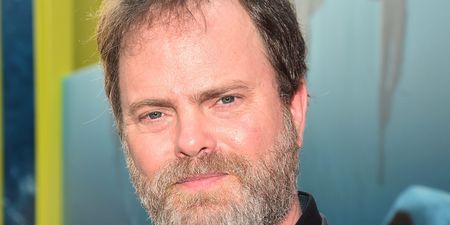Expect some heated debates in Glasgow
COP26 gets underway next week and one issue is burning brighter than a wildfire – can world leaders agree on plans to stop the planet heating up – and can they actually stick to it?
While global warming isn’t the only concern, addressing it means finding solutions to a number of other crises fuelling it. Some of these you will be very familiar with.
Here’s the 10 burning questions that must be addressed in Glasgow.
1) Global Warming
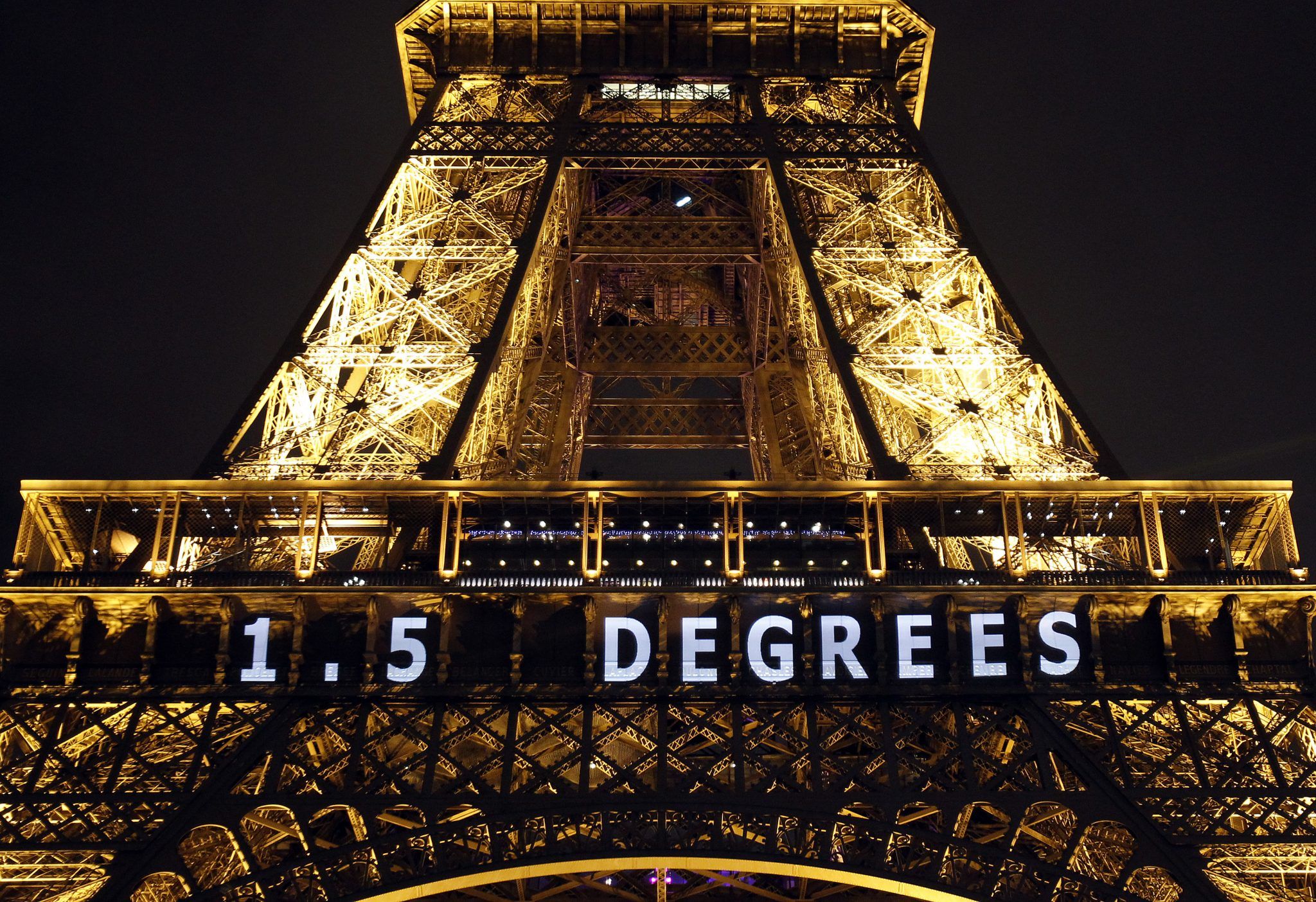 In 2015, leaders agreed that climate change must be kept to a 1.5 degree limit. Current measures mean average global temperatures are meant to rise much more than this (credit: Getty)
In 2015, leaders agreed that climate change must be kept to a 1.5 degree limit. Current measures mean average global temperatures are meant to rise much more than this (credit: Getty)This is the big headline. Ultimately, almost everything at COP26 will circle back to solving the issue at the very heart of the planet’s problems – it’s getting too hot.
As part of the Paris Agreement in 2015, world leaders agreed that 1.5C was the limit global temperatures could reach. If the planet heats up more than this, we pretty much go over a cliff edge of climate change, and things become largely irreversible.
For this very reason, the UN says this is the number one aim at COP26, to “secure global net-zero by mid-century and keep 1.5 degrees within reach”.
Rachel Kennerley, a climate campaigner from Friends of the Earth, told JOE: “COP26 is this moment of assessment on the Paris agreement and whether it’s working and whether governments are living up to that agreement. Spoiler alert: They’re not!”
We just observed Planet Earth's second warmest September on record according to data from @CopernicusECMWF pic.twitter.com/6aMg8L0iFB
— Scott Duncan (@ScottDuncanWX) October 7, 2021
She added that if countries stick to their current pledges, made as part of the Paris Agreement, the planet would warm by between 2.4 and 2.9 degrees.
A number of issues need to be discussed in order to keep the 1.5 target within reach.
The most significant of these is….
2) Fossil fuels and carbon emissions
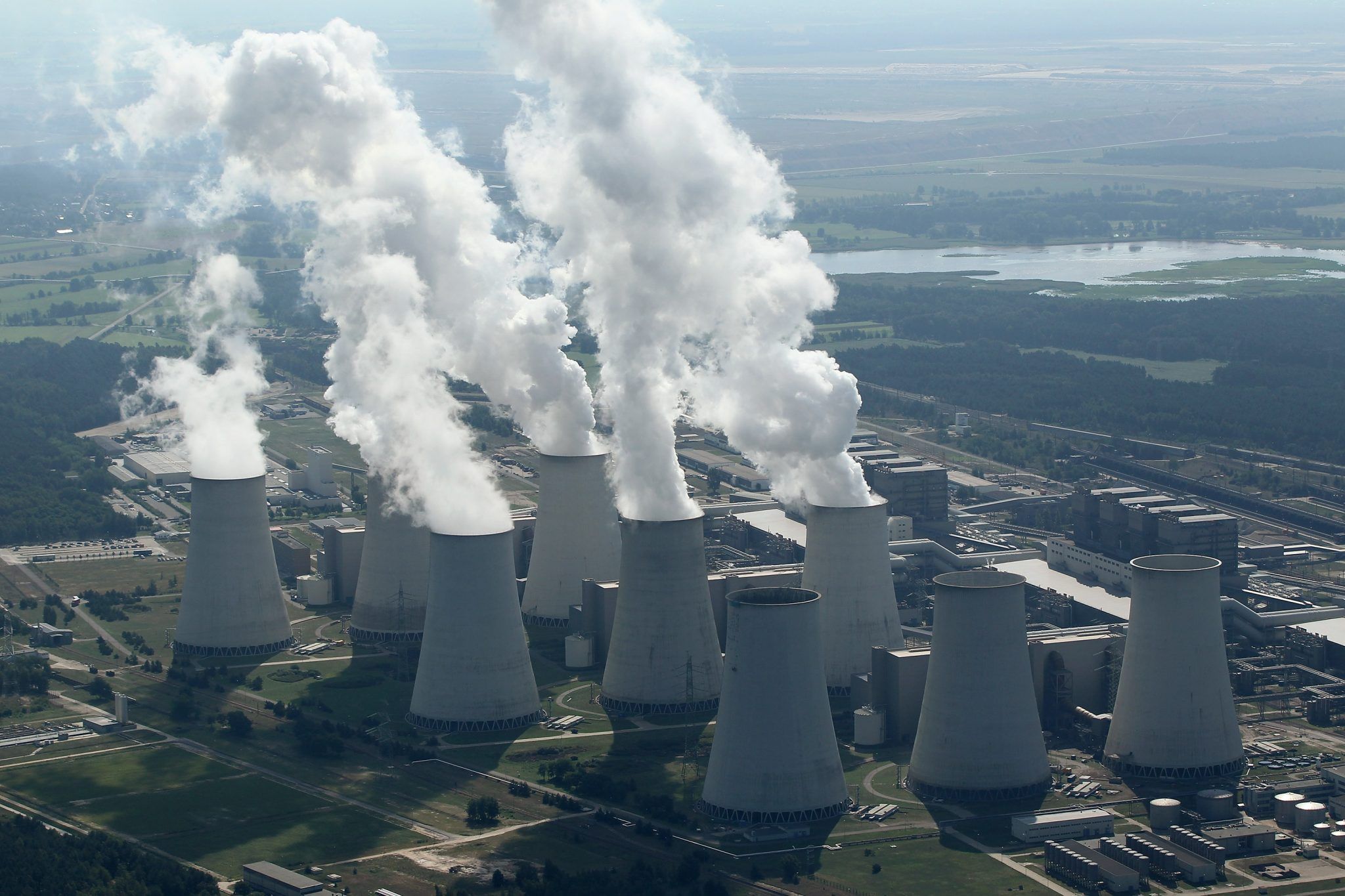 Greenhouse gas emissions need to be severely reduced (credit: Getty)
Greenhouse gas emissions need to be severely reduced (credit: Getty)The answer to stopping global warming? Stop burning fossil fuels. No carbon offsetting, no mere reduction in fossil fuel use, but a complete stop to their use.
Not easy, when usage has barely changed in a decade. A REN21 report from this year shows that in 2019 coal, oil and gas accounted for 80.2 per cent of the global energy consumption. Ten years earlier, the figure was 80.3 per cent.
Energy demand has increased in that time as well, meaning that the world is actually burning more fossil fuels than ever before.
This is something that Dr Aaron Thierry, a member of XR Scientists – a group of scientists who align themselves with Extinction Rebellion – was keen to point out.
“We are now in crisis. It’s the cumulative amount of CO2 that we put out that ultimately determines the temperature of the planet,” he explained.
“We have to then reduce our emissions going forward. In order to meet the targets pledged in Paris we now need really urgent reduction in emissions.”
Related links
What the hell is COP26 and will it actually change anything?
Queen filmed secretly slamming ‘irritating’ politicians who are ‘all talk’ on climate change
A warning sign of a mass extinction event is on the rise, scientists warn
But if a big document leak on Thursday is anything to go by, that’s not going to happen any time soon. The BBC reported that Saudi Arabia, Japan, and Australia are among countries asking the UN to play down the need to move rapidly away from fossil fuels.
World leaders need to increase renewable energy use and speed up electric car production, but progress on both of these issues is slow.
BREAKING: Massive crowd of Indigenous-led climate activists arrive at the White House to confront @JoeBiden and demand an end to fossil fuels. #PeopleVsFossilFuels pic.twitter.com/52VmegENZ0
— People vs. Fossil Fuels (@FightFossils) October 11, 2021
The use of electric vehicles is increasing in the UK – just over 10 per cent of cars sold in 2020 were electric, up from 2.5 percent in 2018 – but the number of charging points is an issue. There are currently about 25,000 in Britain, but according to the Competition and Markets Authority we could need 10 times as many before 2030.
Globally, the story is a little different. In 2020, sales surged 40 per cent, with a record three million new electric cars being registered.
Whilst renewable energy levels are at their highest levels ever, it’s not all good news. Last year, for example, the amount of energy generated by fossil fuels actually went up by 36 per cent in the UK in the second quarter of 2021, due to less favourable conditions for renewables such as wind energy.
In 2019, renewable energy made up 11.2 per cent of global demand. A rise of just 2.5 percent from 2009.
3) Deforestation
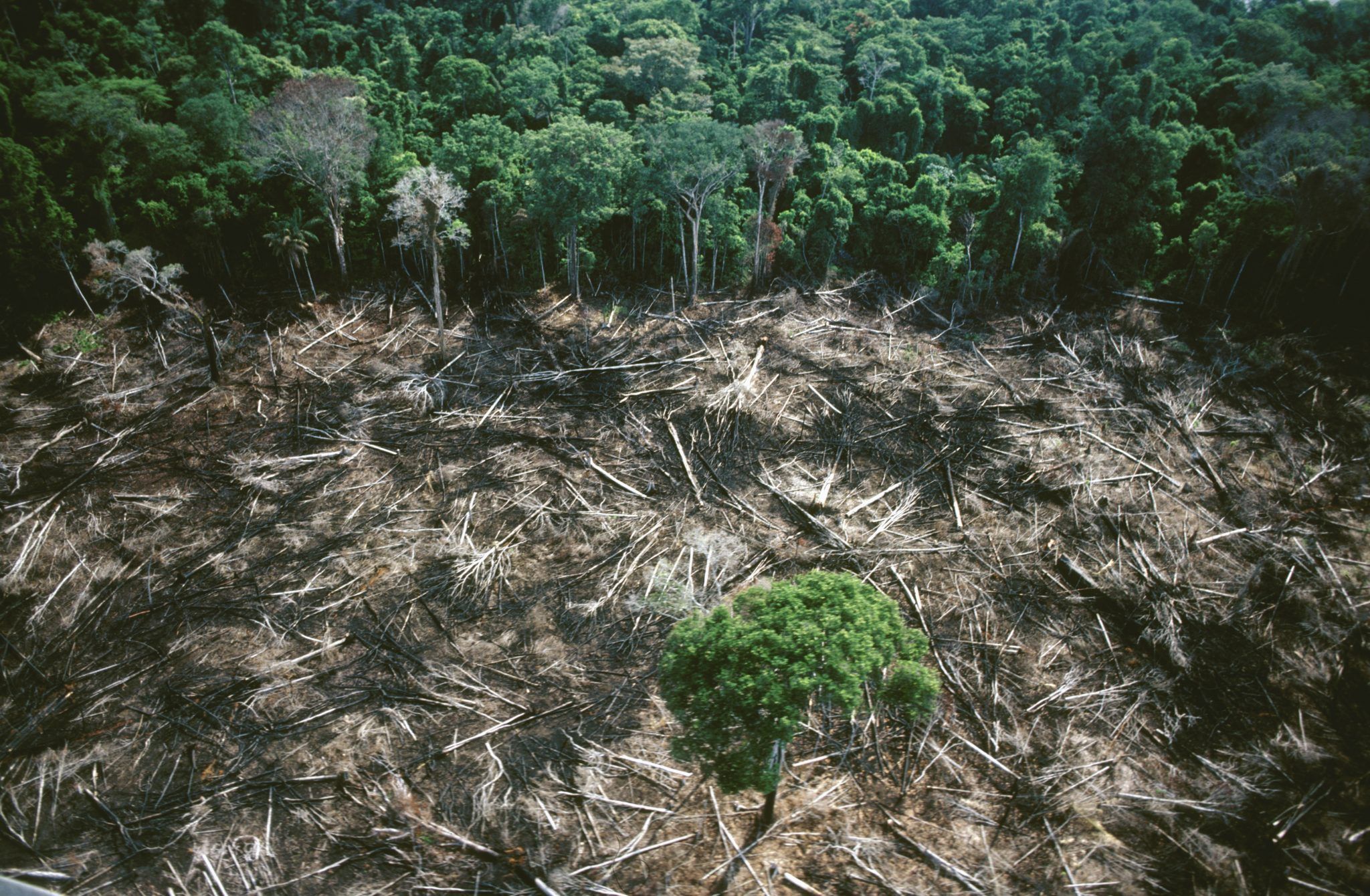 Deforestation of the Amazon has hit its highest level in a decade (credit: Getty)
Deforestation of the Amazon has hit its highest level in a decade (credit: Getty)We’ve been hearing about this issue for years. But it’s still a huge problem. Last year, an area the size of a football pitch was lost every six seconds, and it is thought that by 2030 the planet will only have 10 per cent of its forests left.
This year, deforestation in the Amazon rainforest hit the highest annual level in a decade, according to a report. In July alone an area bigger than the city of São Paulo was deforested (2,095 km²) in the Amazon.
This brought the total area of deforested Amazon to 10,476 km² in the period from August 2020 to July 2021. This is the highest level of deforestation in the rainforest since 2012.
There are two main effects of this. Firstly, forests act as huge carbon sinks, soaking up vast amounts of carbon from the atmosphere, and secondly, they’re havens of biodiversity. They have other uses too, such as preventing flooding and helping maintain soil fertility.
Forests are cut down largely to clear space to raise livestock or plant crops such as sugar cane. With the global population increasing, this issue isn’t going to be an easy fix.
Governments across the world are trying to implement legislation to cut down on illegal deforestation, with the UK government considering a bill that would limit the importation of certain deforestation-linked commodities ahead of COP26.
But this issue may also come down to individuals. Most forest is cleared to raise livestock so the answer to this one could be simple – we need to eat less meat.
4) Loss of biodiversity
 The population sizes of mammals, fish, birds, reptiles, and amphibians have declined by more than two thirds since 1970 (credit: Getty)
The population sizes of mammals, fish, birds, reptiles, and amphibians have declined by more than two thirds since 1970 (credit: Getty)Biodiversity is the variety of all living things on Earth, and how they interlink and work together to provide oxygen, water, food, and an endless number of benefits.
Last year, a report from the WWF found that the population sizes of mammals, fish, birds, reptiles and amphibians experienced a decline of an average of 68 per cent between 1970 and 2016. The report put this mainly down to one thing – human destruction of nature.
Meanwhile, recent analysis has suggested more than 500 species are on the verge of extinction and that the planet is facing its sixth mass extinction event.
The Australian wildfires in 2019-20 put this on the world stage. It was labelled one of the “worst wildlife disasters in modern history” by the WWF and an estimated three billion animals were killed or displaced.
Research this month from the London Natural History Museum suggests that the UK has lost almost half of its natural biodiversity over the centuries, putting us in the bottom 10 per cent in the world for biodiversity intactness, and last out of all the G7 countries, including China, the world’s biggest polluter.
The world’s overall biodiversity intactness is estimated at 75 per cent, which doesn’t sound too bad until you realise that 90 per cent is considered to be the safe limit for ensuring that we do not fall into an ecological disaster that could result in widespread starvation (more on that below).
For Dr Isabel Jones from the University of Stirling, protecting the planet’s biodiversity and ecosystems should be a key focus at COP26. She told JOE that world leaders need to focus on “the critically important role of biodiversity and healthy, functioning ecosystems in contributing to climate change mitigation strategies”.
5) Food insecurity
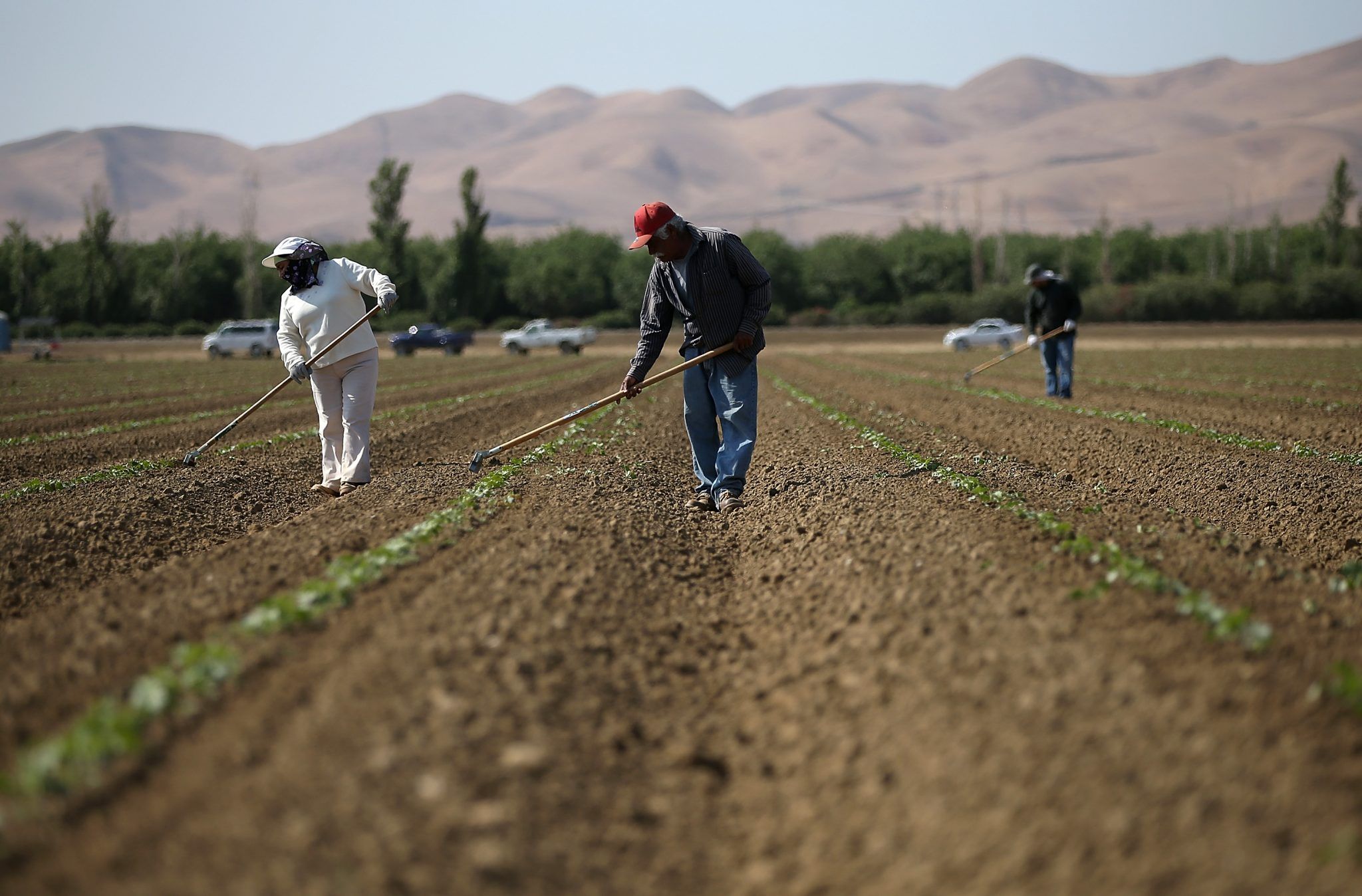 Climate change will severely affect the ability to grow some crops, and even things like fishing. But the global population is only increasing (credit: Getty)
Climate change will severely affect the ability to grow some crops, and even things like fishing. But the global population is only increasing (credit: Getty)Climate change won’t just mean polar bears go extinct and we get warmer summers. It means our food supplies will be put at risk and we’re talking about a much greater threat than supply chain issues.
This crisis would mean an inability to grow certain types of crops in some areas. For example, National Geographic predicts corn farmers in South America would see their crop yield drop by 16 per cent, whilst India and China would see huge losses of arable land by 2050. An article in The Conversation in 2019 estimated that global rice yields have dropped by 0.3 per cent and wheat yields by 0.9 per cent each year.
Warming oceans and changing ocean acidity will disrupt fish populations and the delicately balanced food chains in seas, meaning fishing stocks may not be able to keep pace with consumption.
“Our ecosystems will start falling apart and when that starts to happen, we’ll find that the very life support systems that provide all of our clean water and food start breaking down,” Dr Thierry explains.
“At that point, we might not be able to grow enough food to feed everybody and our civilisation will be at stake, there will not be enough food to go round.”
With the global population set to hit 10 billion by 2056, food supply is likely to become a significant issue as food production, according to estimates in 2017, needed to increase by 70 per cent just to meet needs by 2050.
So food will be harder to source and we will need more of it. And there’s another problem, food waste. Around a third of the food intended for human consumption is never eaten.
According to Earth.org, food waste would be the third-highest emitter of greenhouse gases if it was a country, behind China and the US.
6) Paying for it all
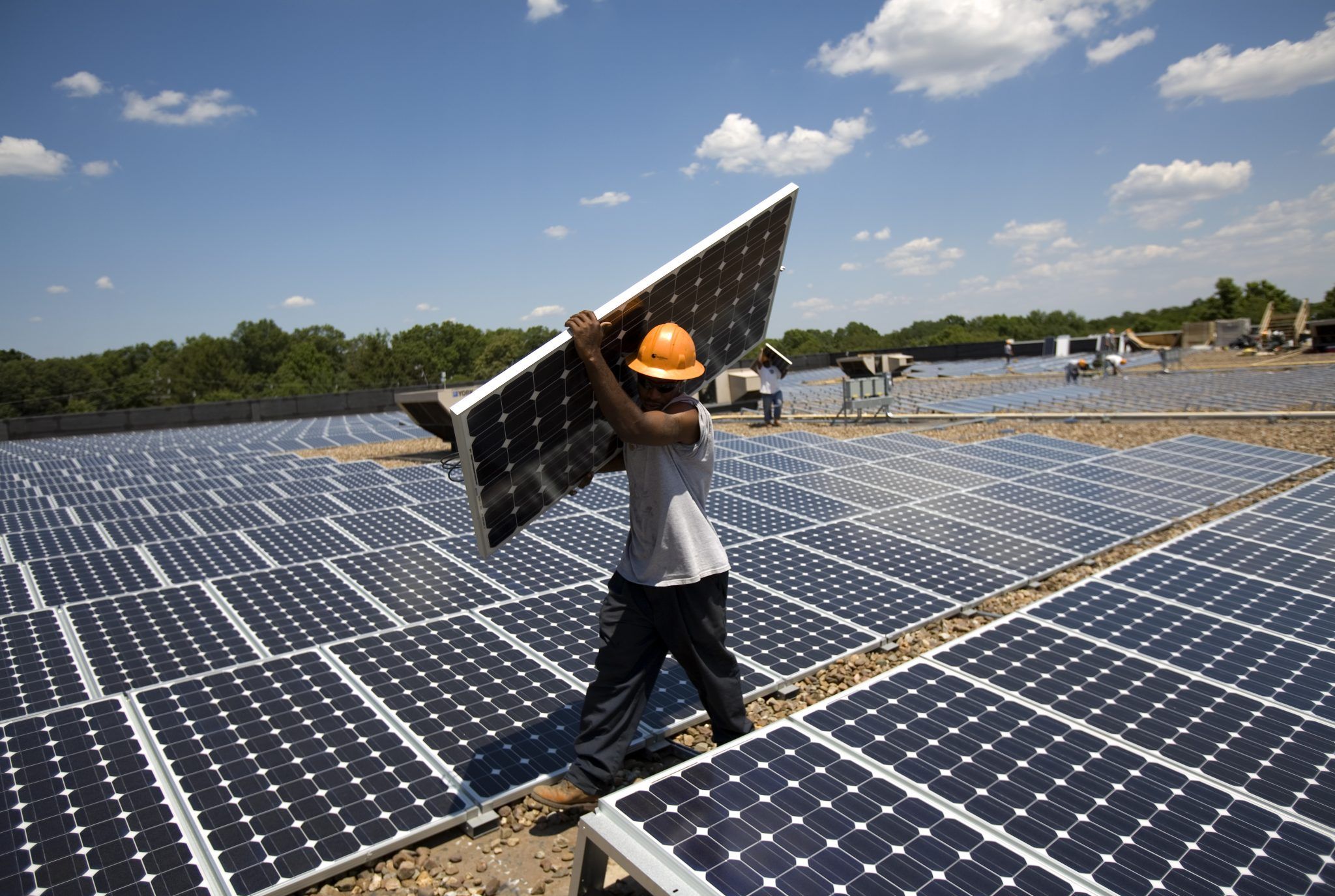 Poorer nations need financial aide to help them move to renewable energy production as oppose to much cheaper coal (credit: Getty)
Poorer nations need financial aide to help them move to renewable energy production as oppose to much cheaper coal (credit: Getty)This is known as climate finance, and it tries to address the hypocrisy that is often central to climate talks – that the nations most vocal about cutting greenhouse gas emissions are usually the ones that have polluted the planet the worst.
Countries like the UK, which went through a major industrial revolution of coal-burning, now tell other developing nations not to. To address this, in 2009, the richest nations in the world pledged $100 billion a year in aid to help developing nations invest in cleaner energy.
But like many other climate pledges, this hasn’t been met. Just $79.6 billion was made available in 2019, only 2% more than the year before. Developing nations have understandably said that without funding they will not be able to meet their emission targets.
A lot of these nations aren’t the worst offenders for emissions, but they are the ones whose emissions are increasing as they continue to develop.
Take the Philippines for example. A country with a GDP per capita of just $3,503 (in the UK it was £29,147 in 2020), but which was 36th in the world in 2016 for CO2 emissions. Its annual CO2 emissions went up every year from 2007 to 2016.
Poorer nations, like the Philippines, are just simply not in a financial position to implement cleaner energy policies and are more likely to rely on fossil fuels.
The UK should be supporting lower-income countries to go green, not cutting funding in times of crisis. https://t.co/zZJJ3f4hG4
— Friends of the Earth (@friends_earth) October 9, 2021
Kennerley said: “Rich countries that have done the most to cause climate change have pledged to give $100 billion dollars a year to help countries fast forward through that industrial revolution phase, skip straight to clean energy.
“Currently they’re not meeting that goal, so that’s another really important thing, increasing that finance, increasing the money so that other countries can actually deliver those climate targets as well.”
7) Extreme weather
 An estimated 72,000 square miles of land was burnt during the 2019-20 Australian bushfires, affecting around 3 billion creatures (credit: Getty)
An estimated 72,000 square miles of land was burnt during the 2019-20 Australian bushfires, affecting around 3 billion creatures (credit: Getty)This is the most visible impact of climate change that we see every year and it’s getting worse.
Floods in England last year killed 111 people, hospitalised 274, and injured 422, the highest numbers on record. They also caused economic losses of around £333 million.
California saw its largest wildfire season ever in 2020 with more than four per cent of the state’s land burnt to the ground, causing $10 billion worth of damage. The 2019-20 Australian wildfires destroyed almost 3,000 homes and cost an estimated A$100 billion to deal with.
A study from Christian Aid estimated the 10 most expensive climate-related disasters of 2020, and found that all together they had cost $145.4 billion and displaced more than 17 million people.
Most significantly, 2020 was the hottest year on record according to Nasa.
This review from the US says it all: Heatwaves, wildfires & drought: How this summer is a ‘preview’ of Earth’s coming climate crisis.
Floods in northern China have displaced 1.75 million people after 3 months of rain fell in 5 days.
Over 120,000 people have been evacuated from Shanxi, which is normally a dry region. Floods have destroyed over 17,000 buildings and decimated almost 500,000 acres of crops. pic.twitter.com/9mizE4JSiy
— AJ+ (@ajplus) October 11, 2021
The death toll from the 2021 floods in Western Europe stands at more than 180 people. The July floods in China’s Henan province killed 302 people, displacing 1.75 million people.
And July 2021 gained the title of the hottest month ever.
Feel like you’re hearing these stories a lot? Well you are, these events are becoming the “new normal” according to Kennerley.
She said: “We’ve had loads of extreme weather events on every continent this year. You know, wildfires, droughts, flooding in Germany.
“It feels like that’s becoming the new normal, this weather is becoming more and more normal, and this is after just 1 degree of warming.”
Remember, the limit we’re trying to stay within is 1.5 degrees. Things could get much, much worse.
8) Rising sea levels
 Arctic ice continues to melt at an alarming rate (credit: Getty)
Arctic ice continues to melt at an alarming rate (credit: Getty)A tale as old as time. Probably the first climate change issue you learnt about at school, and the issue that first comes to mind when we think of global warming. But that’s because it’s a huge problem.
Sea levels are rising an average of 3.2mm a year globally and could rise by as much as two metres by the end of the century. The Arctic is also warming more than twice as fast as anywhere else on the planet.
And this will put hundreds of millions across the world at risk.
According to Climate Central, sea-level rises this century could flood coastal areas that are home to between 340 million and 480 million people. This would force these people to migrate to safe areas, exacerbating issues of overpopulation in cities and straining resources.
This interactive map shows which areas will be submerged if sea levels rise, and at what point this is likely to happen with unchecked pollution. Safe to say, the picture is pretty grim.
The answer? Halt global warming.
9) Ocean acidity
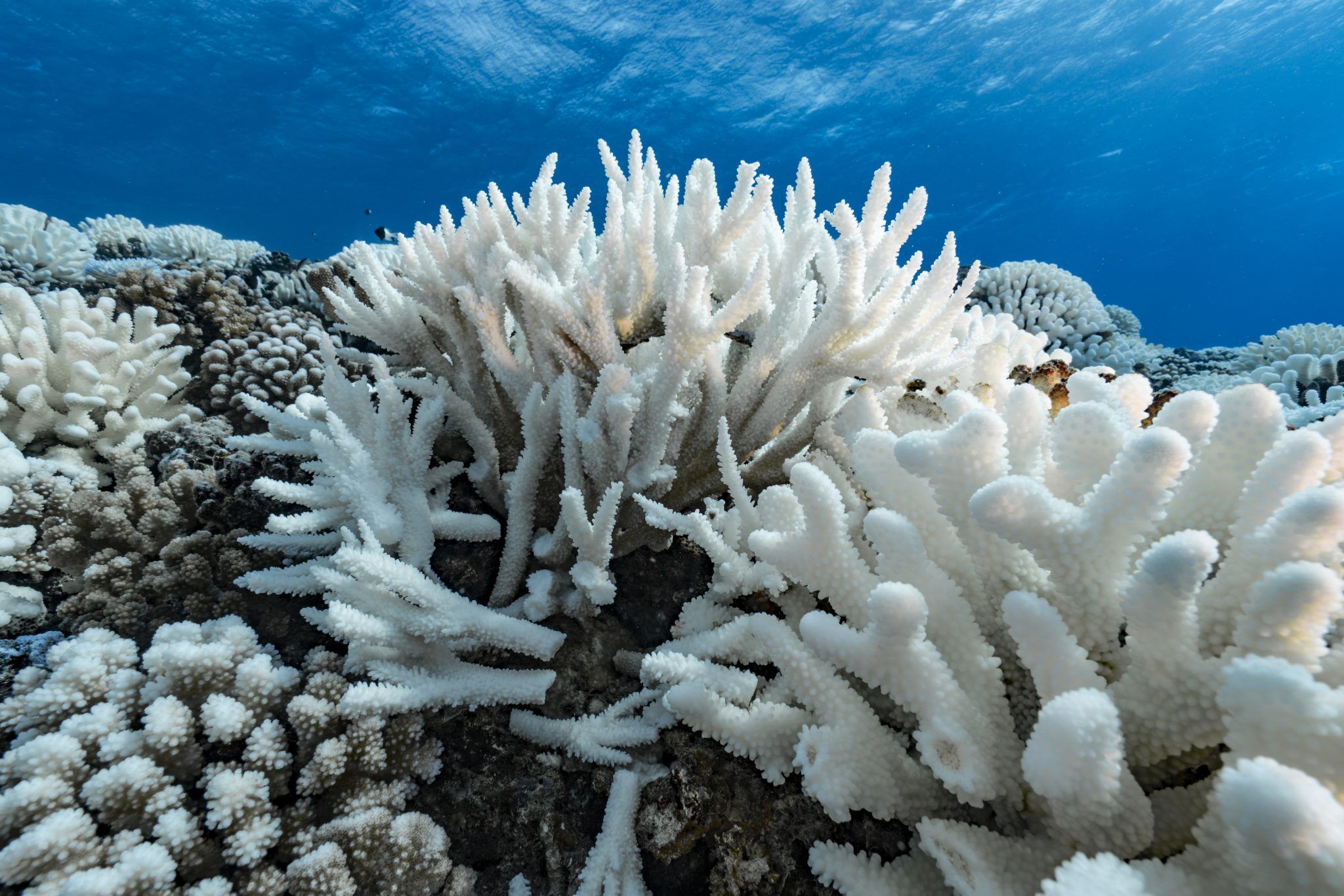 Rising ocean acidity makes it more difficult for reefs to recover from coral bleaching (credit: Getty)
Rising ocean acidity makes it more difficult for reefs to recover from coral bleaching (credit: Getty)Staying on an aquatic theme, let’s talk about ocean acidity, which is about as scary as it sounds. Our oceans are huge carbon sinks, absorbing about 30 per cent of CO2 that is released into the Earth’s atmosphere.
But as more CO2 is released into the atmosphere, the ocean absorbs more of it. Good right? No!
Oceans are becoming more acidic, causing havoc to delicately balanced ecosystems below the waves. If seas become too acidic, this could result in the shells and skeletons of calcifying organisms creatures, like oysters and mussels, dissolving.
This would have a ripple effect on food chains, causing much larger creatures to struggle for food. Ocean acidification would also have a huge impact on commercial fisheries, as calcifying organisms, such as pteropods and brittle stars, form the base of the food chain in northern Arctic waters.
And for indigenous people living in the Arctic, a collapse of marine food chains would be catastrophic with their diets relying on marine creatures.
Ocean acidity has increased by 26 per cent since 1850. This is 10 times faster than any period in the last 55 million years.
It is also making it harder for coral reefs to recover from coral bleaching. This is a phenomenon that occurs when rising ocean temperatures drive algae away from corals, causing them to lose colour.
There are fears that entire reefs could be wiped out by 2050. Rising ocean acidity will make it more difficult for corals to rebuild their exoskeletons and recover from bleaching.
Yet again, the answer is pretty straightforward: less greenhouse gas emissions, stop global warming.
10) Carbon Markets
 Carbon markets allow nations to offset carbon emissions against each other (credit: Getty)
Carbon markets allow nations to offset carbon emissions against each other (credit: Getty)You may not have heard of these before, but they are one of the sneaky ways that countries and major international companies get around climate targets, and therefore important to be aware of.
The concept is pretty straightforward: nations basically ‘trade’ emissions with each other, and offset their emissions against another nation.
For Kennerley, this would be the one issue she would have sorted at the COP, describing them as a “distraction from actually cutting emissions”.
“The way to solve climate change is by cutting emissions, but carbon markets allow nations to trade emissions, to write off emissions. They can still create the pollution but they are offsetting it with something else,” she explained.
“When you have countries not even planting their own forests but being like ‘Brazil, we’ll give you this money, maybe don’t cut down the Amazon and then we can still build a coal mine,’ that’s ridiculous, and doesn’t work.
“So if I could have one agreement it would be scrap that entire section. Big red pen through the entirety of carbon markets, and put the focus back on cutting emissions at source. Stop digging up the coal, oil and gas, stop burning it.”












